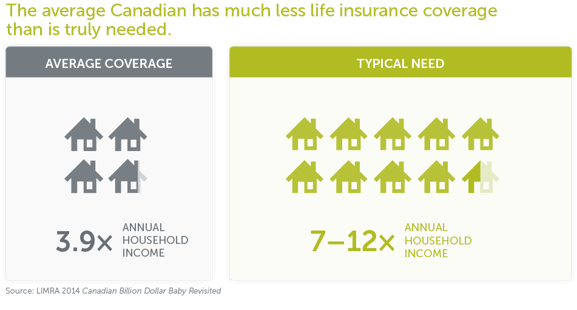
There is no question that confusion exists when it comes to the topic of life insurance, and where there is confusion, mistakes can happen. So, to help you learn from other’s experiences, here are some common life insurance mistakes to avoid before, during and after you make a life insurance purchase:
1. Procrastinating and waiting too long to purchase.
One of the primary factors that affect the cost of life insurance is age. The younger you are when you purchase life insurance, the lower the cost for insurance. Buying sooner rather than later can save you money. Dragging your feet on the purchase of life insurance and waiting until you are older could affect your ability to obtain the amount of life insurance you and your family need if the unexpected happens.
2. Underestimating the amount of coverage you need and being underinsured.
Be sure that you are realistic about the amount of coverage you need. Take the time to calculate how much money your family will need to meet immediate expenses such as funeral expenses, legal fees, outstanding debts and mortgage balances, and how much money your family will need to maintain their standard of living over perhaps several years. Tools exist to help you determine your life insurance needs and can help to ensure you are purchasing the right amount of life insurance.

3. Relying solely on your group life insurance.
While having group life insurance as part of an employee benefits package at work is a great benefit, most employer plans only offer a basic amount and type of life insurance. This one size fits all design may not offer you and your family enough life insurance protection to meet the needs of your specific family situation. Moreover, most group life insurance policies terminate when you stop working for the company. By having an individual life insurance policy in addition to your group coverage, you can make sure your life insurance solution is tailored to your specific needs.
4. Failing to understand that mortgage insurance through your bank is not the same as life insurance.
Mortgage insurance offered by a lender has very different features than individual life insurance offered by an insurance company. Unlike individual life insurance, mortgage insurance coverage declines as the mortgage balance declines but the amount you pay for the insurance remains the same. This means you get less and less value for the amount you are paying for the insurance coverage. With mortgage insurance you also typically have no choice as to how the money is to be used because the lender is the beneficiary of the policy, and you usually need to re-qualify for mortgage insurance if you switch lenders, move or sell your home.

5. Thinking that you can’t afford life insurance.
Term life insurance is designed to provide you with life insurance coverage for a specific length of time, at an affordable cost. The amount you pay during the initial term is typically lower than the cost of other types of life insurance products such as permanent life insurance. If you only need life insurance for the length of the term you choose, it will be the lowest cost solution but be aware that if you need to renew for a second term that your renewal costs will be significantly higher. Thus, the longer the term you purchase, the better the cost savings you will achieve. The best thing about term life insurance is that it offers individuals with differing financial circumstances and income levels the ability to obtain affordable life insurance coverage when they need it most – when they have many financial responsibilities, young families and debt.

6. Believing you do not qualify for insurance as a result of a health issue.
Current or previous health issues may not keep you from getting the life insurance you need to provide financial security for your family. You may just need to prepare more for the life insurance purchase process. Each life insurance company may view your health issue differently and working with an insurance advisor can help you find the right company. It is important to understand that options do exist for coverage. This may include group life insurance through your employer, or types of life insurance that do not require a medical exam such as simplified issue or guaranteed issue life insurance. Note that these types of life insurance typically cost more.
7. Buying life insurance without doing your research.
Understanding the life insurance lingo and knowing the questions to ask before you buy, empowers you to choose the right type of life insurance to meet your needs. If something doesn't make sense during your research, reach out an insurance advisor for help. A life insurance advisor can help you understand the variety of products available and which ones might best balance your income protection needs with your monthly budget. He or she can customize an insurance plan that is right for you and your family. If you don’t have an advisor yet, you can find one here.
8. Under-valuing a stay-at-home family member.
Take into consideration the replacement value of a stay-at-home family member when it comes time to buy life insurance. It is important to recognize that a person maintaining a home and caring for children or another person in the home, such as an elderly parent, has a lot of financial value (especially compared to the cost of hiring an in-home caregiver), and there are many activities they do every day that would cost money to replace.
9. Not being completely honest on your life insurance application.
Some people may be tempted to omit certain information or stretch the truth about their health, lifestyle or family history and provide misleading personal information on their life insurance application to try to lower their cost of insurance. Please note, it’s absolutely essential that you are completely honest when completing your application. Providing inaccurate information can lead to an insurance company denying the future life insurance claim and jeopardizing your family’s financial security.
10. Failing to keep your beneficiary designations updated or failing to designate backup beneficiaries.
It is important to name primary and contingent beneficiaries. If your primary beneficiary dies before you, policy proceeds will go to the contingent beneficiary you have listed. If you don't have any “back-up” beneficiary, the proceeds will go to your estate which may be subject to probate, and your family may have to wait longer to get the funds from the life insurance claim.
Don’t neglect to keep your beneficiary designations updated. Major life events like marriage, divorce or a non-spouse beneficiary dying before you, make it important to regularly review your beneficiary designations. Be sure to share with your loved ones where to find your life insurance policy information so the life insurance claim process can be easier for them.

11. Not periodically reviewing your policy and your needs.
Your life insurance needs will change over the lifetime of your policy as you enter different stages throughout your life. Significant life events such as marriage, having children, and buying a new home play an integral role in determining how much life insurance coverage you need and should trigger a review of your life insurance coverage in order to take care of your changing needs.
Life insurance should never be a "once and done” kind of thing. As circumstances change in your life, so should your coverage.
12. Letting your policy lapse.
If you fail to pay your premiums, your policy will lapse. If it is not in force when you die, there is no financial security available for your family.
Life insurance companies typically offer policyholders 30 days to submit payment. However, as of day 31 of non-payment there is no coverage and the policy lapses. Depending on the type of policy and the length of time it has lapsed, there will be reinstatement requirements that may include another medical exam.
By avoiding these life insurance mistakes, you can help ensure you are providing financial protection and security for you and your family!

